Delivery options and delivery speeds may vary for different locations
Sign In
or enter a zip code
Email * Password *
REPAIR & HOW TO
MAINTENANCE
TROUBLESHOOTING
GUIDES
TIPS & TRICKS
ALL ARTICLES WATCH VIDEOS ABOUT US SHOP PARTS CONTACT US
Whether it's a motorcycle, an ATV, or a UTV, it probably has some kind of starter relay or solenoid.
Your solenoid might differ from others and have more connections, but there are two basic tests you can do to evaluate your solenoid's health.
A starter solenoid is basically a switch that creates a contact point between the battery and the starter. When the starter button is pressed, it energizes the coil, which pushes a contactor to complete the circuit. This transfers DC current from the battery to the starter.
In the first diagram below, the starter button has not been pressed, so the circuit is not complete.
In the next diagram, the starter button has been pressed, and the coil in the solenoid has been energized. This pushes the contactor up and completes the connection from the battery to the starter motor.
Knowing how to test the solenoid on your offroad vehicle is an important step to troubleshooting starting problems on your machine. Here are some tests you can do to check the health of your motorcycle's starter relay.
Tools Needed - Motorcycle Starter Relay TestDepending on your unit, the tools you'll need to access the starter solenoid may vary.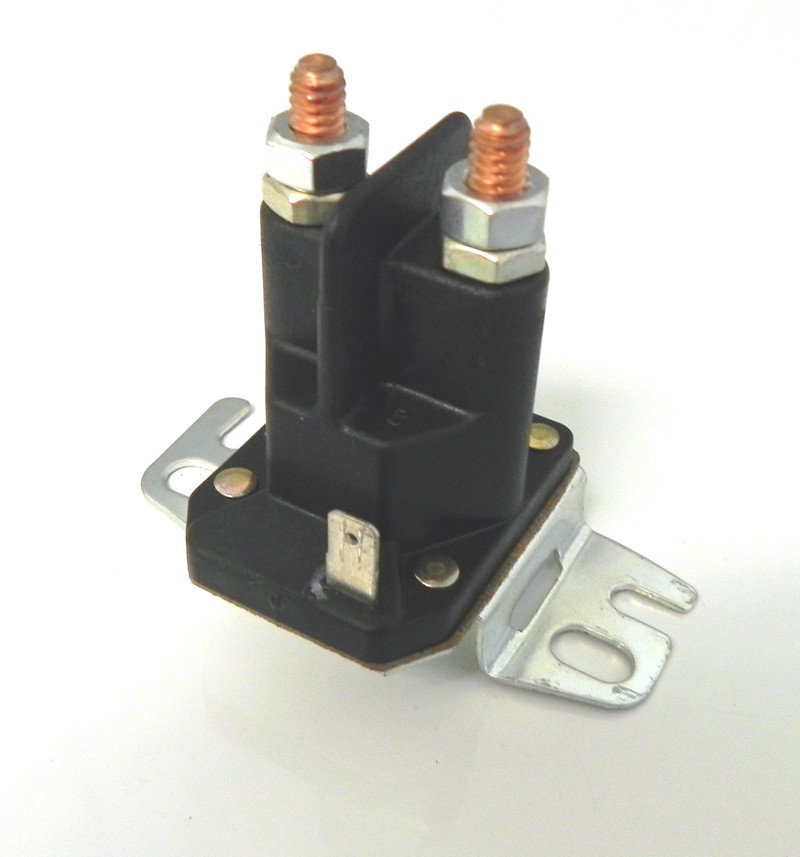 But these tools will help you regardless of what kind of unit you're working with.
But these tools will help you regardless of what kind of unit you're working with.
This first test is designed just to see if the contactor is pushing up and completing the connection in the solenoid.
Step 1. The solenoid has two wires that normally connect to the starter button. There is no polarity on the solenoid, so it doesn't matter which side is which. You're just running current through it. Using back probes, connect directly from the battery to one of these wires. Complete the connection to the negative side of the battery first.
Step 2. Connect a second back probe to the solenoid. Then, connect it to the positive side of the battery. You should hear an audible "click" as the connector is pushed up to complete the circuit. If you don't hear it, the solenoid has gone bad. And if you do, move on to the next test.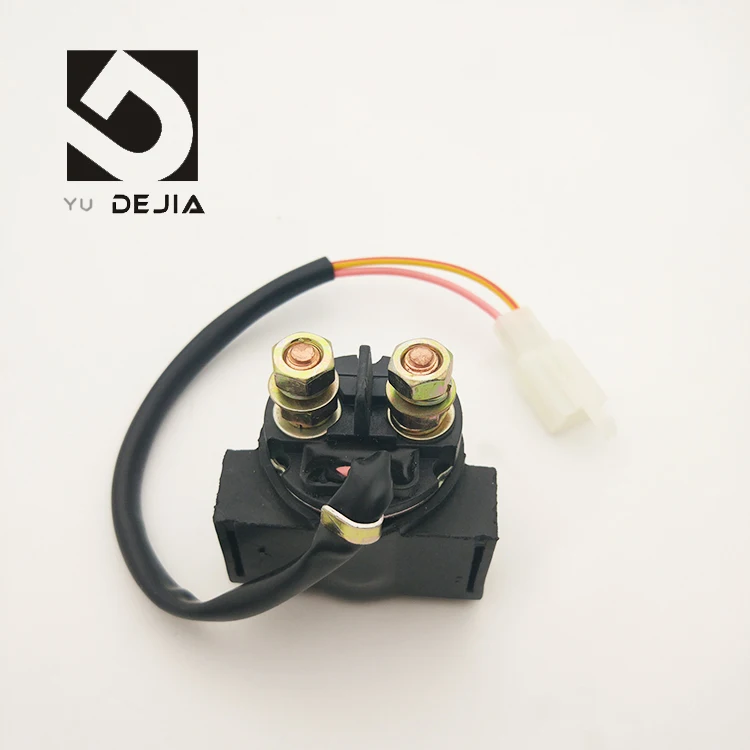
In some cases, even when the connector engages, the unit still will not start. That can happen when there's corrosion on the connectors inside the solenoid. This next test can help you diagnose this problem.
Starter Relay Test 2Step 1. Keep your connections in place from the first test, and simply disconnect the back probe from the positive terminal on the battery.
Step 2. Connect your multimeter to the main connectors on the solenoid and set your multimeter to a resistance test. Again, polarity isn't important. Just connect one clip of your multimeter to each side of the solenoid.
Step 3. Once connected, you should see "OL," indicating an open circuit.
Step 4. Connect the positive side of the battery using the back probe connection from Step 1. This will energize the solenoid and push the connector into position, completing the circuit.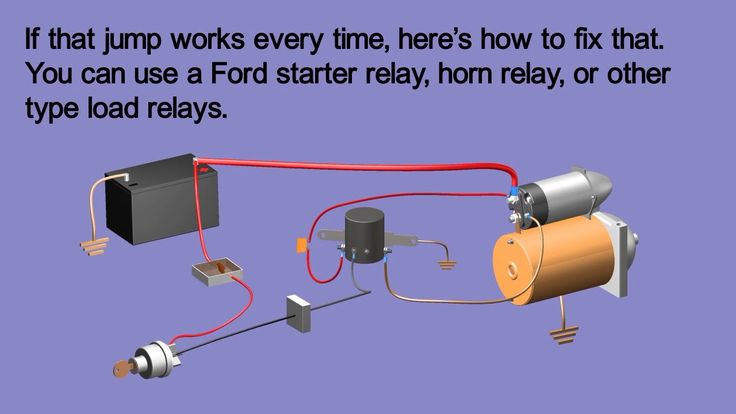
These two simple solenoid tests show you the basics of how to diagnose issues with your relay. First, check to make sure the connector is engaging and completing the circuit to the starter. Then, make sure the circuit to the starter is connected when the connector is engaged.
The starter relay is just one of many starting problems that can affect your motorcycle. Watch the video below to see how to diagnose multiple starter problems on a Honda CBR 600 motorcycle.
body
`;
Cars
Fact Checked
Jeremy LaukkonenThere are a few different areas that an all-terrain vehicle (ATV) can make use of a solenoid, which can be either standard equipment or involve accessories.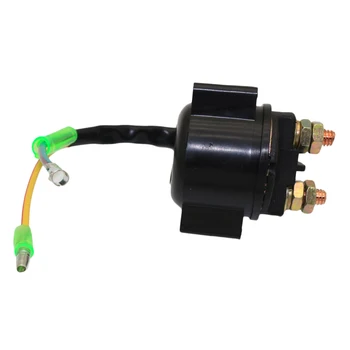 In each of these cases, a remote switch is used to activate the ATV solenoid, which in turn bridges a contact to provide current to another device. The main type of ATV solenoid is found in the ignition system, and these components are used to allow low current switches to activate high current starter motors just like in automotive applications. Another type of ATV solenoid is typically found in winch accessories. This kind of solenoid is designed to allow a rocker switch, or other similar component, to send battery voltage to a winch.
In each of these cases, a remote switch is used to activate the ATV solenoid, which in turn bridges a contact to provide current to another device. The main type of ATV solenoid is found in the ignition system, and these components are used to allow low current switches to activate high current starter motors just like in automotive applications. Another type of ATV solenoid is typically found in winch accessories. This kind of solenoid is designed to allow a rocker switch, or other similar component, to send battery voltage to a winch.
A solenoid is a component that consists of a coil wrapped around a core known as an armature. When an electrical current is applied to the solenoid, the armature can be induced to move forward or backward. This mechanical motion can then be used to perform a variety of tasks, such as bridging a contact. There is no electrical connection between the current used to activate this type of solenoid and the connection bridged by the armature, so this can be used to isolate a switch from the component it activates.
When an electrical current is applied to the solenoid, the armature can be induced to move forward or backward. This mechanical motion can then be used to perform a variety of tasks, such as bridging a contact. There is no electrical connection between the current used to activate this type of solenoid and the connection bridged by the armature, so this can be used to isolate a switch from the component it activates.
The primary type of ATV solenoid is an integral part of the starting system. In most cases, an ATV starter solenoid will be a discrete component, though they can also be integrated into a starter motor.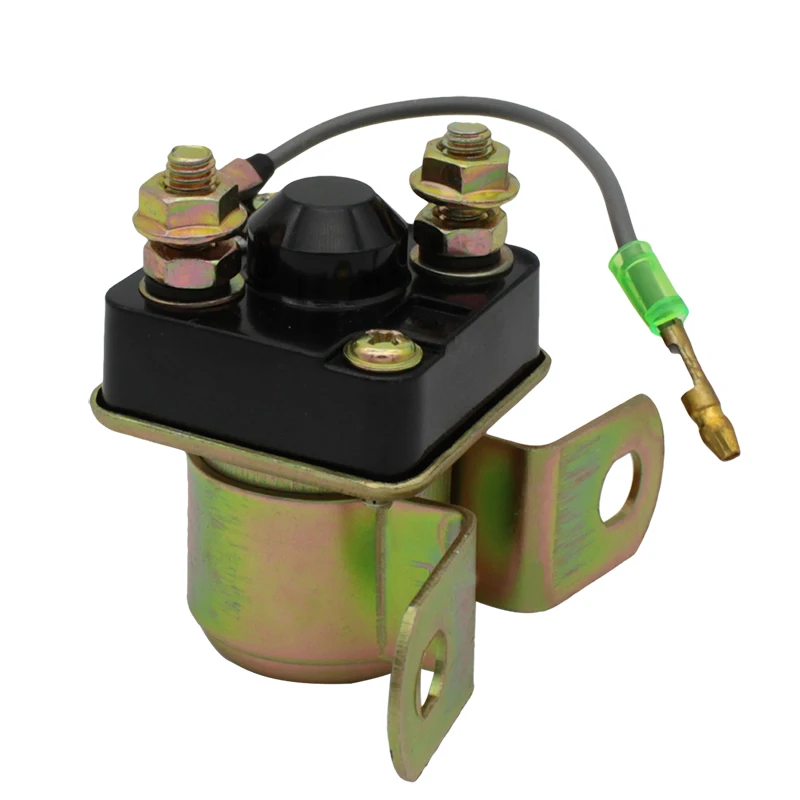 The way this type of solenoid works is that the component is wired to a starter switch or keyed ignition switch, a starter motor and a battery. A small amount of amperage is sent to the solenoid when the switch is activated, which causes the armature to move inside the unit. This motion then bridges an internal contact, which essentially connects the starter motor to the battery.
The way this type of solenoid works is that the component is wired to a starter switch or keyed ignition switch, a starter motor and a battery. A small amount of amperage is sent to the solenoid when the switch is activated, which causes the armature to move inside the unit. This motion then bridges an internal contact, which essentially connects the starter motor to the battery.
It is also possible to find ATV solenoids in various accessories, such as winches. The function of an ATV winch solenoid is similar to that of a starter solenoid, in that it is designed to provide battery voltage to the winch.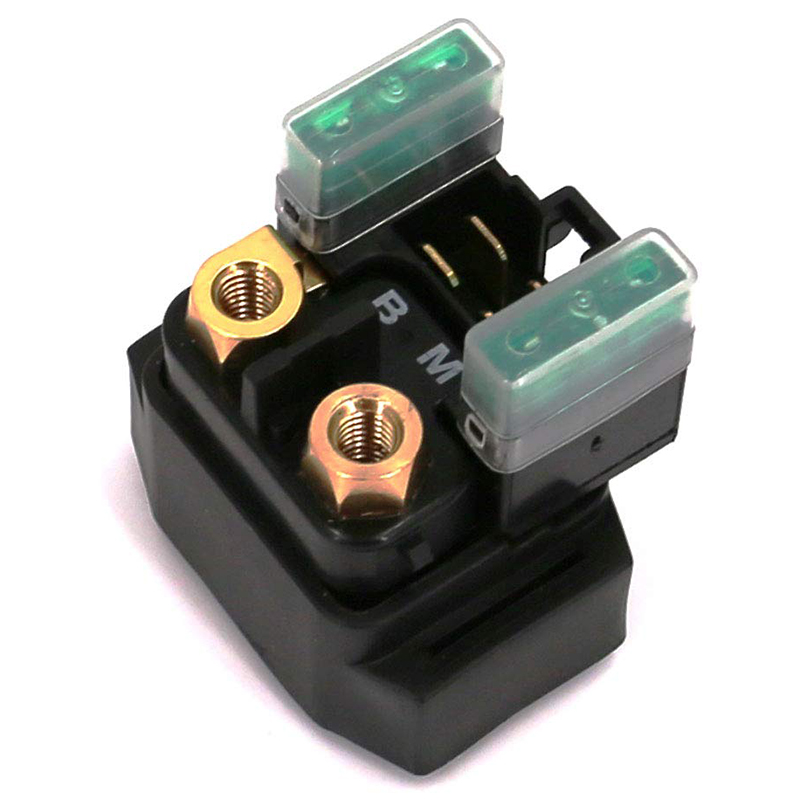 It functions in much the same way, in that a rocker switch provides a low current that causes the solenoid to bridge an internal contact. This type of ATV solenoid is sometimes capable of reversing polarity, which can be necessary in order to spool a cable out and wind it back up.
It functions in much the same way, in that a rocker switch provides a low current that causes the solenoid to bridge an internal contact. This type of ATV solenoid is sometimes capable of reversing polarity, which can be necessary in order to spool a cable out and wind it back up.
11/22/2017 #Relay retractor # Starter
Retractor relay: starter control Electric car starter is controlled by a special device located on its body - a retractor (or traction) relay. All about solenoid relays, their design, types and principle of operation, as well as the correct selection and replacement of the relay in the event of a breakdown - read in this article.
All about solenoid relays, their design, types and principle of operation, as well as the correct selection and replacement of the relay in the event of a breakdown - read in this article.
Starter solenoid relay (traction relay) - automotive electric starter assembly; a solenoid combined with a contact group that connects the starter motor to the battery and mechanically connects the starter to the flywheel crown when starting the engine.
The solenoid relay is included in the mechanical and electrical parts of the starter, controlling their joint work. This node has several functions:
The traction relay, although it works as part of the starter, is a separate unit that plays an important role in the operation of the engine starting system.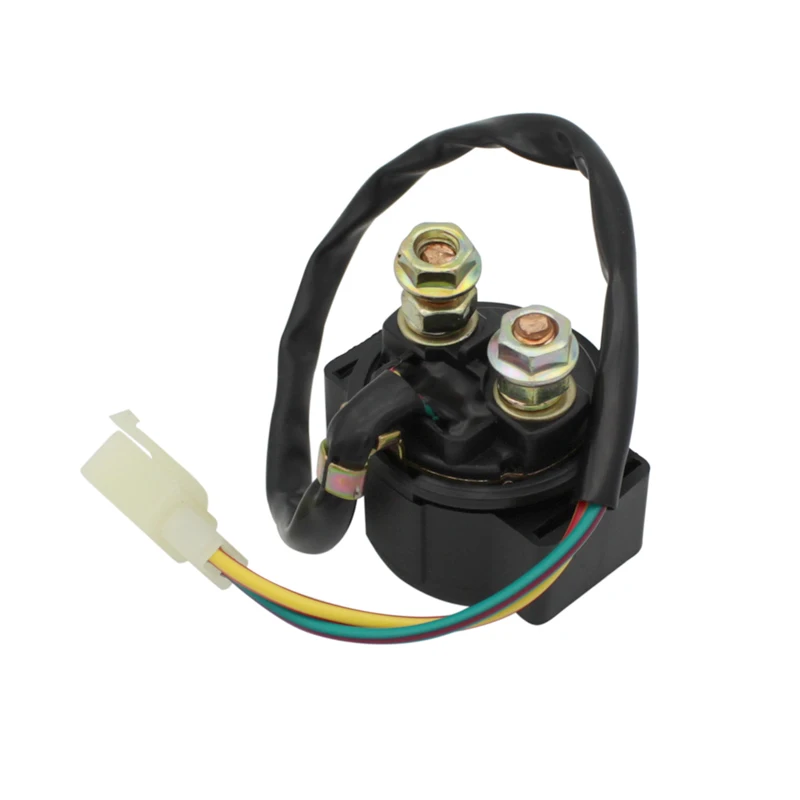 Any malfunction of this unit will make starting the engine much more difficult or impossible, so repair or replacement must be carried out as soon as possible. But before buying a new relay, you should understand its types, features and principle of operation.
Any malfunction of this unit will make starting the engine much more difficult or impossible, so repair or replacement must be carried out as soon as possible. But before buying a new relay, you should understand its types, features and principle of operation.
Starter solenoid assembly
Electric starters currently use identical solenoid relays in design and operation. This assembly contains two interconnected devices - a power relay and a solenoid with a movable armature that turns it on (and at the same time brings the bendix to the flywheel).
The design is based on a cylindrical solenoid with two windings - a large retractor and a retainer wound on top of it. On the back of the solenoid is a relay housing made of a durable dielectric material. On the end wall of the relay there are contact bolts - these are high-section terminals through which the starter is connected to the battery.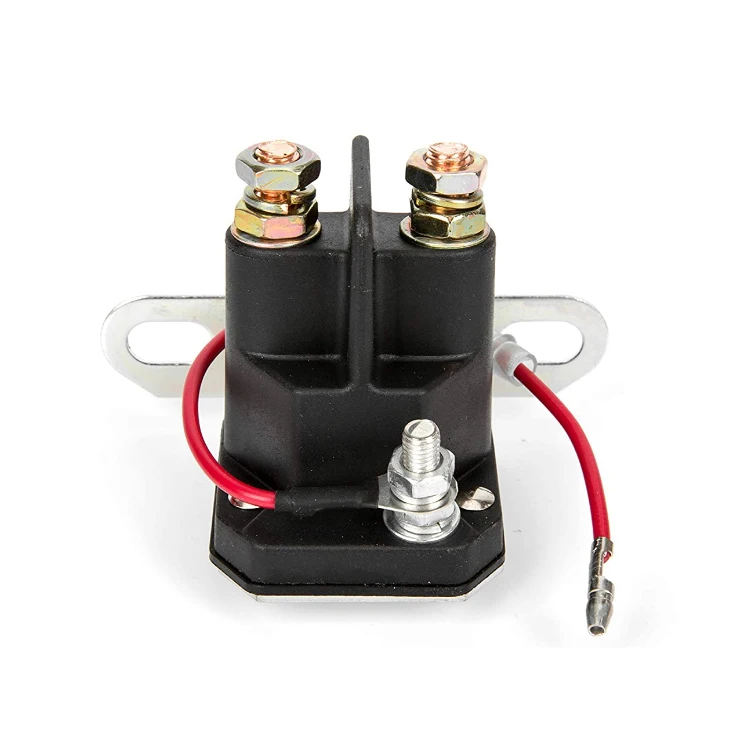 The bolts can be steel, copper or brass, the use of such contacts is due to high currents in the starter circuit when starting the engine - they reach 400-800 A or more, and simple terminals would simply melt at such a current.
The bolts can be steel, copper or brass, the use of such contacts is due to high currents in the starter circuit when starting the engine - they reach 400-800 A or more, and simple terminals would simply melt at such a current.
Inside the solenoid is a movable rod, which on the relay side carries a contact disk - a circle of brass or other alloy. The rod is withdrawn from the contact bolts by a spring, therefore, in the non-working position, the circuit is open. Also, a massive anchor is located inside the solenoid, however, this part does not have a rigid fixation and, if necessary, can be easily removed. The armature is a metal (steel) rod of circular cross section, it is spring-loaded and protrudes from the solenoid in the non-working position. At the rear end of the armature there is a recess for resting against the relay rod. On the outer part of the anchor, a groove, hole, brackets or other devices are made for connection with the starter drive plug.
This whole structure is placed in a metal case (separable or non-separable), on the dielectric case of the relay there are terminals for connecting the assembly to the appropriate electrical circuits - the power circuit, the ignition switch circuit and, if provided, to the ignition coil circuit.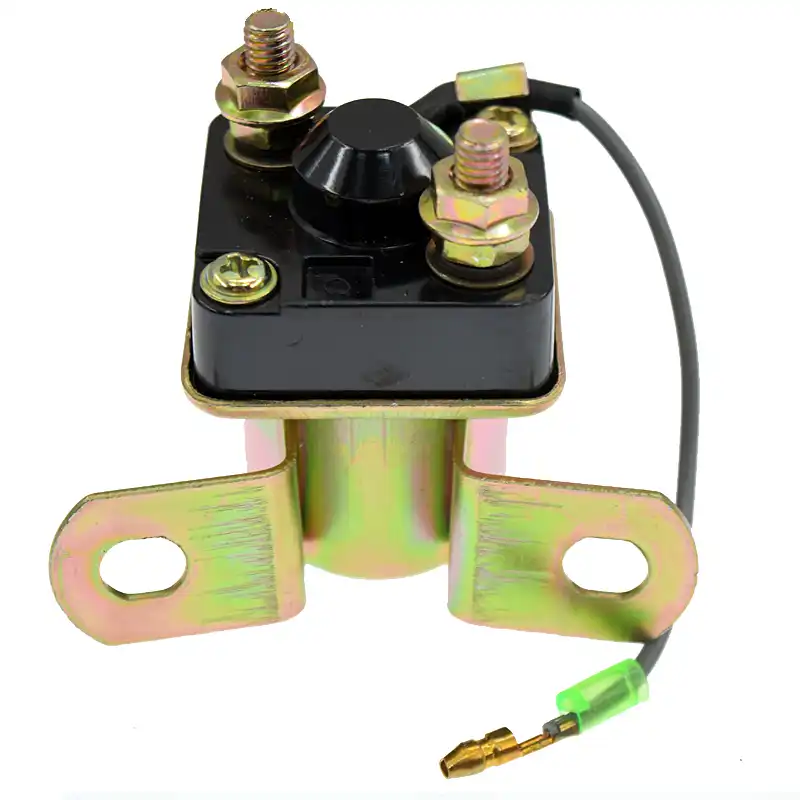 The relay is rigidly mounted on the starter housing.
The relay is rigidly mounted on the starter housing.
Traction relays, having a fundamentally identical design, are divided into two types according to their functionality (and the number of contacts on the relay side):
The first type of relay has the construction described above, while the second type relay has an additional terminal with a spring contact, which is closed by a contact disk. In the relay of the first type there are only four terminals - two power and two low-current (for connecting the retracting and holding windings), and in the relay of the second type there are already five terminals - two power, two low-current and one additional.
Connection diagram for solenoid relay with auxiliary contact and auxiliary starter relay
Solenoid relays of all types have the same principle of operation.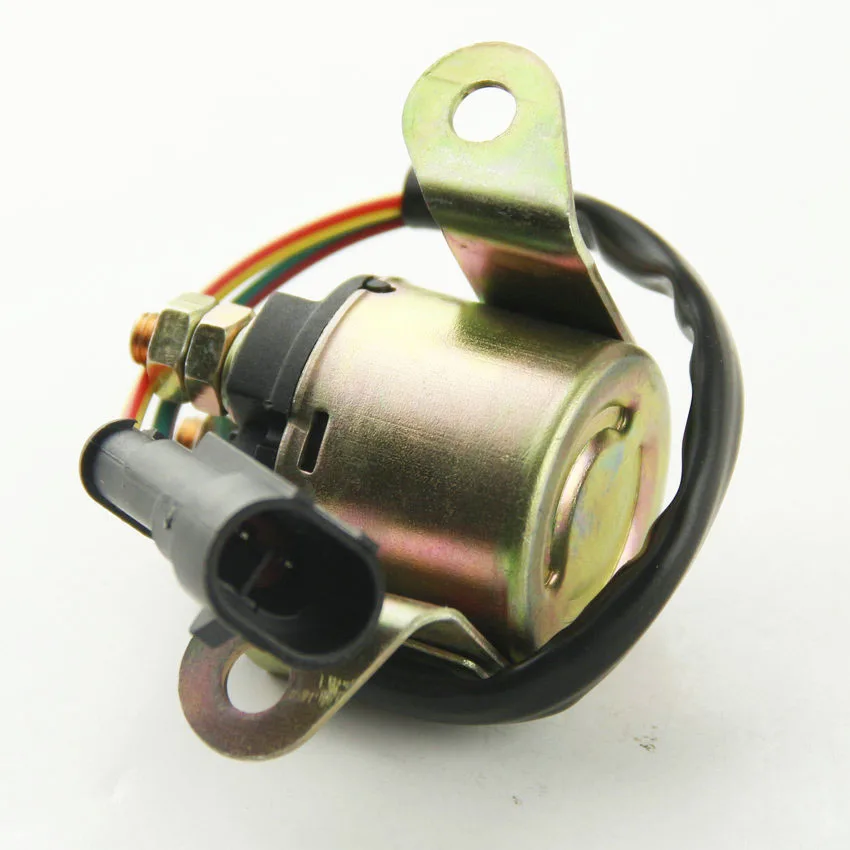 There are three processes running in parallel at this node.
There are three processes running in parallel at this node.
When the ignition key is turned to the starter position, current from the battery is supplied to both coils of the solenoid - retracting and holding. A magnetic field arises in the solenoid, which draws in the armature - it overcomes the resistance of the spring and enters the inside of the solenoid until it stops. Moving, the armature pulls the fork, which, acting as a lever, brings the starter drive with the drive gear fixed to it to the flywheel ring gear - the starter is mechanically connected to the engine.
Also during movement, the anchor pushes the rod with its back side. The contact disk fixed on the rod rests against the contact bolts and closes the starter power supply circuit - the starter armature starts to rotate, the torque from it through the bendix goes to the flywheel and crankshaft, the engine starts. If the relay has an auxiliary contact, then when it is closed, current is supplied to the ignition coil or any auxiliary equipment necessary to start the engine.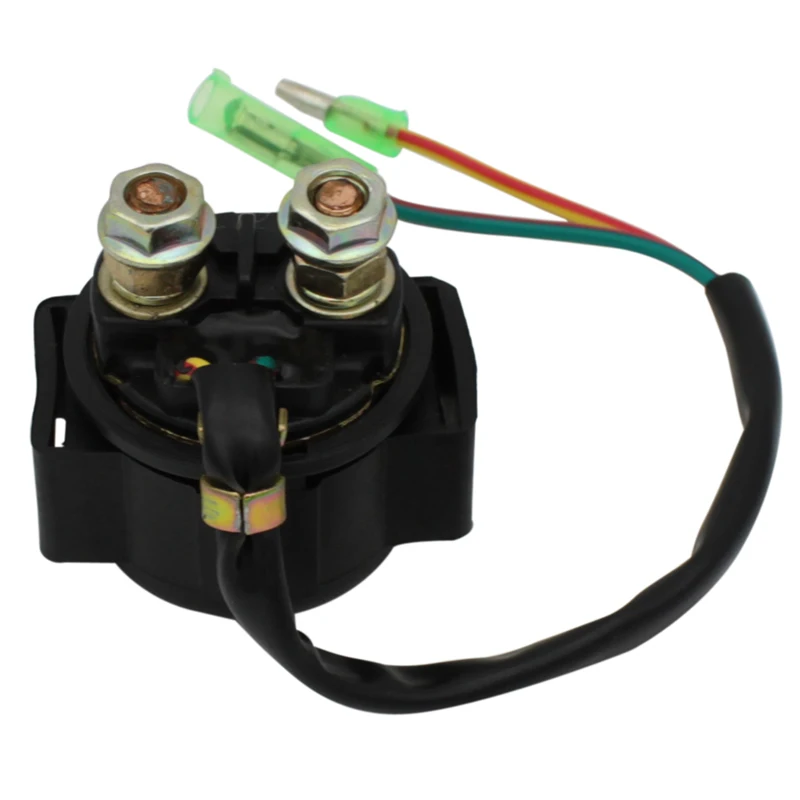
When the contact bolts are closed, the retracting winding is short-circuited (its terminals are closed to each other), so it stops working. However, the holding winding is still connected to the battery, and the magnetic field it creates is sufficient to hold the armature securely inside the solenoid.
After a successful start of the engine, the ignition key returns to its original position, as a result of which the holding winding circuit breaks - in this magnetic field around the solenoid disappears and the armature is pushed out of the solenoid by the action of the spring, and the rod is retracted from the contact bolts. The starter drive is retracted from the flywheel crown, and the starter is disengaged. The traction relay and the entire starter are transferred to the position of readiness for a new engine start.
The general arrangement of the electric starter and the location of the solenoid relay in it
The traction relay is subjected to significant electrical and mechanical stress, so there is a high probability of its failure even with careful operation.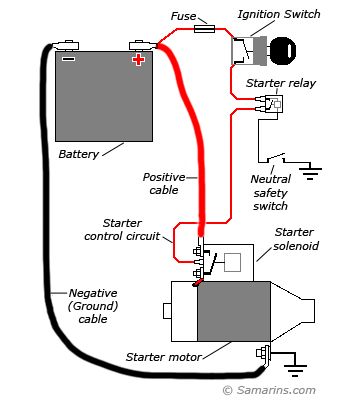 Various signs indicate a malfunction of this unit - the absence of a characteristic knock of the starter drive supply when the ignition is turned on, weak rotation of the starter with a charged battery, starter "silence" when the drive supply is running, and others. Also, malfunctions are detected when the relay rings - usually there are breaks in the windings, an increase in resistance in the power circuit due to burning and contamination of the contacts, etc. Diagnostic algorithms, usually given in the vehicle manual, help determine the malfunction. Often, it is difficult or impossible to eliminate the identified problems (for example, a break in the retracting or holding windings, breakage of the contact bolt, and some others), so the relay is easier and cheaper to completely replace.
Various signs indicate a malfunction of this unit - the absence of a characteristic knock of the starter drive supply when the ignition is turned on, weak rotation of the starter with a charged battery, starter "silence" when the drive supply is running, and others. Also, malfunctions are detected when the relay rings - usually there are breaks in the windings, an increase in resistance in the power circuit due to burning and contamination of the contacts, etc. Diagnostic algorithms, usually given in the vehicle manual, help determine the malfunction. Often, it is difficult or impossible to eliminate the identified problems (for example, a break in the retracting or holding windings, breakage of the contact bolt, and some others), so the relay is easier and cheaper to completely replace.
Only those types and models of solenoid relays specified by the vehicle manufacturer should be selected for replacement. The purchase must be made by catalog numbers - this is the only way you can confidently change the unit and make the starter work in normal mode. It is difficult or impossible in principle to install a relay of another type (due to unequal dimensions), and if this can be done, then the starter may not work correctly or not perform its main function at all.
It is difficult or impossible in principle to install a relay of another type (due to unequal dimensions), and if this can be done, then the starter may not work correctly or not perform its main function at all.
To replace the relay, the electric starter must be removed from the engine and disassembled, often with a special tool. When installing a new relay, it is necessary to carefully make electrical connections - the wires are pre-stripped and twisted, when fixing them on the terminals, it is necessary to ensure reliability by preventing sparking and heating. All operations are best performed in accordance with the recommendations prescribed by the automaker in the instructions for the repair and maintenance of the vehicle.
In the future, the traction relay, like the starter itself, requires only periodic inspection and testing in accordance with the maintenance regulations. When properly selected and replaced, this assembly will operate reliably and efficiently, providing reliable engine starting.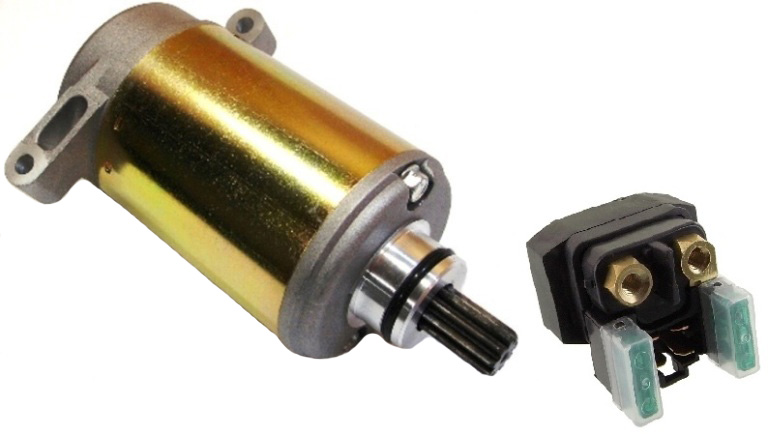
#Generator bar
Generator bar: fixing and adjusting the car's generator
14.09.2022 | Articles about spare parts
In automobiles, tractors, buses and other equipment, electric generators are mounted to the engine by means of a bracket and a tensioner that provides belt tension adjustment. About the generator strips, their existing types and designs, as well as the selection and replacement of these parts - read the article.
#Compressor adapter
Compressor adapter: reliable pneumatic connections
08/31/2022 | Articles on spare parts
Even a simple pneumatic system contains several connecting parts - fittings, or adapters for the compressor. About what an adapter for a compressor is, what types it is, why it is necessary and how it works, as well as the correct selection of fittings for a particular system - read the article.
#Nissan stabilizer link
Stabilizer bar Nissan: the basis of the lateral stability of the "Japanese"
06/22/2022 | Spare Parts Articles
The chassis of many Japanese Nissan vehicles is equipped with a split type anti-roll bar connected to the suspension parts by two separate struts (rods).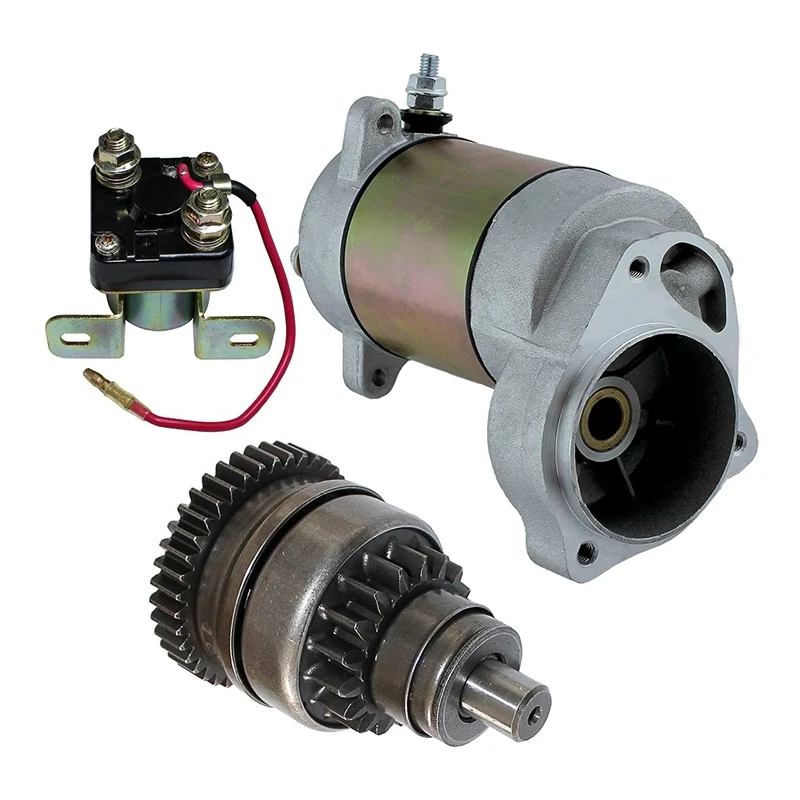 All about Nissan stabilizer struts, their types and design, as well as selection and repair - read in this article.
All about Nissan stabilizer struts, their types and design, as well as selection and repair - read in this article.
#Drive V-belt
Drive V-belt: reliable drive of aggregates and equipment
06/15/2022 | Articles about spare parts
Gears based on rubber V-belts are widely used to drive engine units and in transmissions of various equipment. All about drive V-belts, their existing types, design features and characteristics, as well as the correct choice and replacement of belts - read the article.
Back to the list of articles
A solenoid can be defined as: an electromechanical valve that is typically used to control the flow of a liquid or gas. In a car, solenoids are present in many major parts such as the injectors or the starter. It should be noted that this common name is often used to refer to the starter solenoid, also known by other names such as contactor, circuit breaker, traction relay, traction solenoid, or starter relay.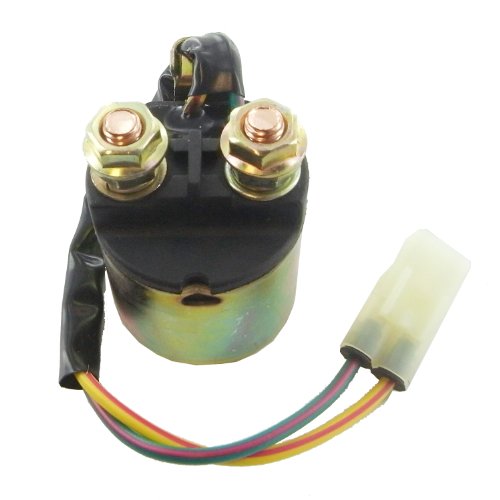
The solenoid that most of us know (at least when we talk about cars) is above the starter. To better understand this mechanism, we are going to describe in more detail how it works, where it is used, and what are its symptoms when it is damaged.
The solenoid is a device that consists of a spiral coil of wire, a body and a movable plunger (armature). When an electric current is applied, a magnetic field is formed around the coil, which attracts the piston. Simply put, a solenoid converts electrical energy into mechanical work. Electromagnets have the advantage that they can be turned on and off by applying or removing electrical current.
Generally speaking, the function of the solenoid is to cause the crankshaft to rotate so that the cylinder block is actuated by pressing the ignition key on the steering column or pressing a button on the dashboard. Fuel and air enter the cylinder chamber to perform four cycles of traditional internal combustion mechanics:

The coil consists of many turns of tightly wound copper wire. When electric current flows through this wire, a strong magnetic field/flux is created. On the other hand, a casing, usually made of iron or steel, surrounds the coil, concentrating the generated magnetic field. The plunger is attracted to the stops (in continuous tug of war) by the concentration of the magnetic field, which provides the mechanical force to do the work.
The solenoid body is usually made of plastic, aluminium, brass or stainless steel. These elements are chosen because they are non-magnetic and can handle the liquids or gases they regulate. In addition, they can operate on alternating (AC) or direct (DC) current, making them versatile for many machines. We won't go into detailed equations, but it can be roughly said that the smaller the solenoid, the less power they can use.
Solenoid applications include a wide range of industrial configurations.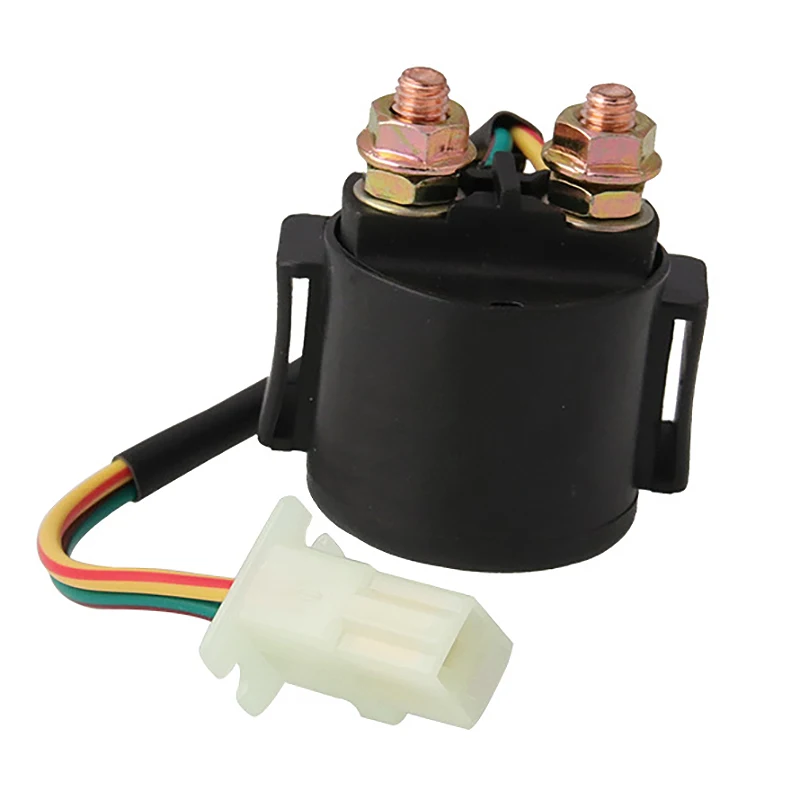 Solenoid valves can be found in many different industries, from water supply and water treatment (drinking, waste, black and grey) to vehicles and tanks.
Solenoid valves can be found in many different industries, from water supply and water treatment (drinking, waste, black and grey) to vehicles and tanks.
Gas lines also use solenoids to control the flow of natural gas. It is known that a gas leak is no joke, and the ability to quickly turn off the gas increases safety and reduces danger. Dishwashers and washing machines also use solenoids to provide enough water to wash dishes and clothes, for example. As far as we know, automotive applications for solenoids come down to flipping a switch, like the aforementioned car starter.
If the starter solenoid is damaged or has simply reached its service life, the engine will not start when the key is turned. It is likely that the electricity will not reach the solenoid and no electromagnetic field will be created that will allow the motor to wake up. If this happens, it is important to rule out that it is not caused by a low battery.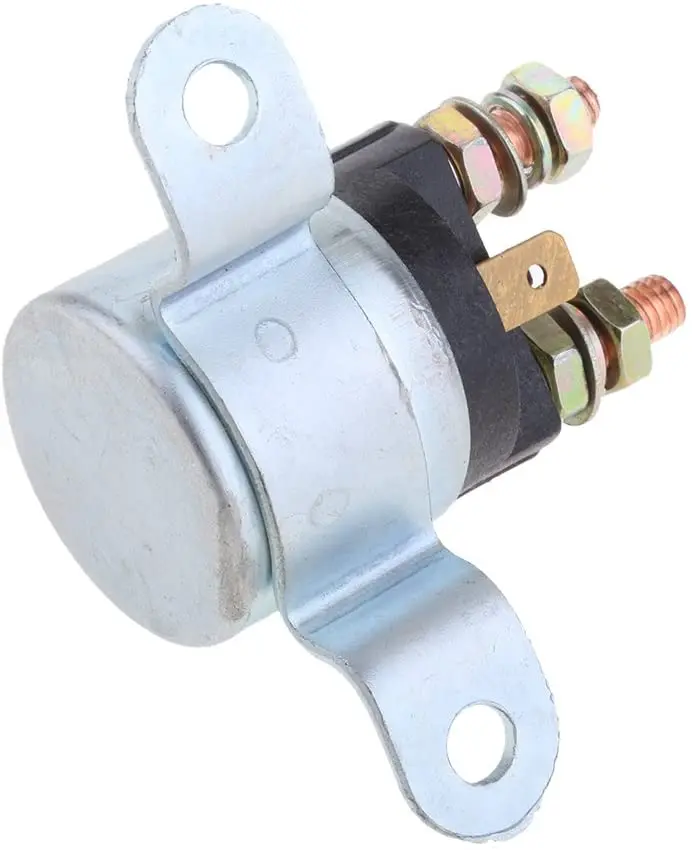 To rule out a solenoid malfunction, we can perform the following test.
To rule out a solenoid malfunction, we can perform the following test.
First of all, it is important to note that the solenoid is a delicate element that must be handled very carefully so as not to damage it. To check that it works, you need to use some battery clamps, find the starter and the solenoid itself, which is usually located on it. The negative clip should be placed on the starter housing and the positive clip should lightly touch the positive terminal of the solenoid. The idea is to simulate what happens when the ignition key is turned.
When electricity passes, the engine will start. If the solenoid does its job during this test but not when the ignition key is turned, the problem is most likely with the cylinder or internal wiring. In some vehicles, when you turn the key, you can hear a sound similar to the sound of a "chopper". This is a sign that the starter is turning but the solenoid is not working.
However, the solenoid failure may not be due to a lack of battery power.